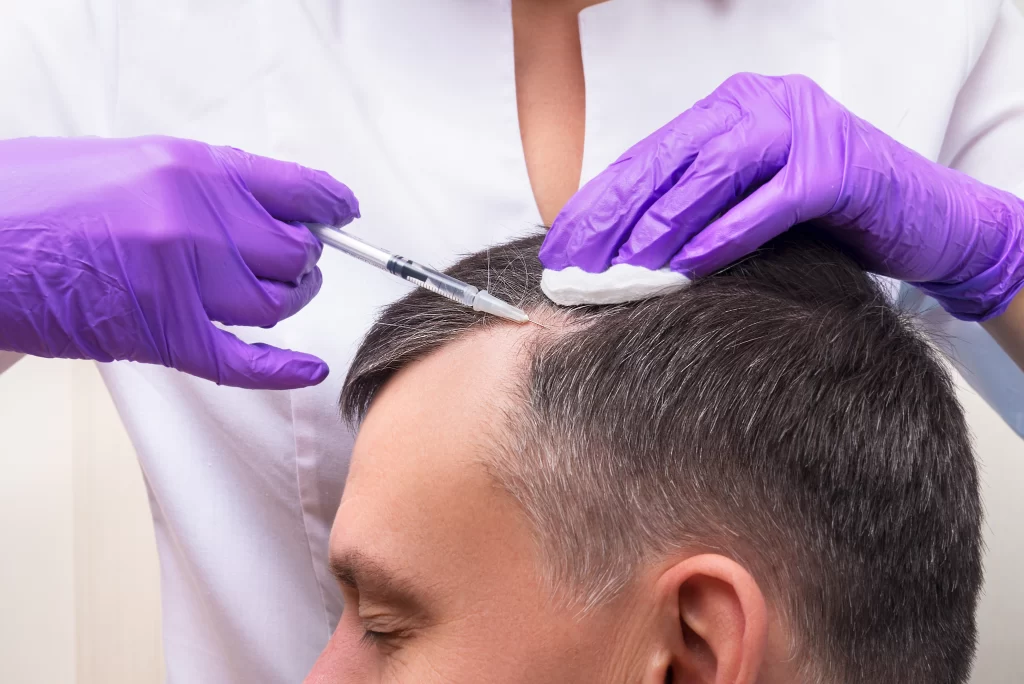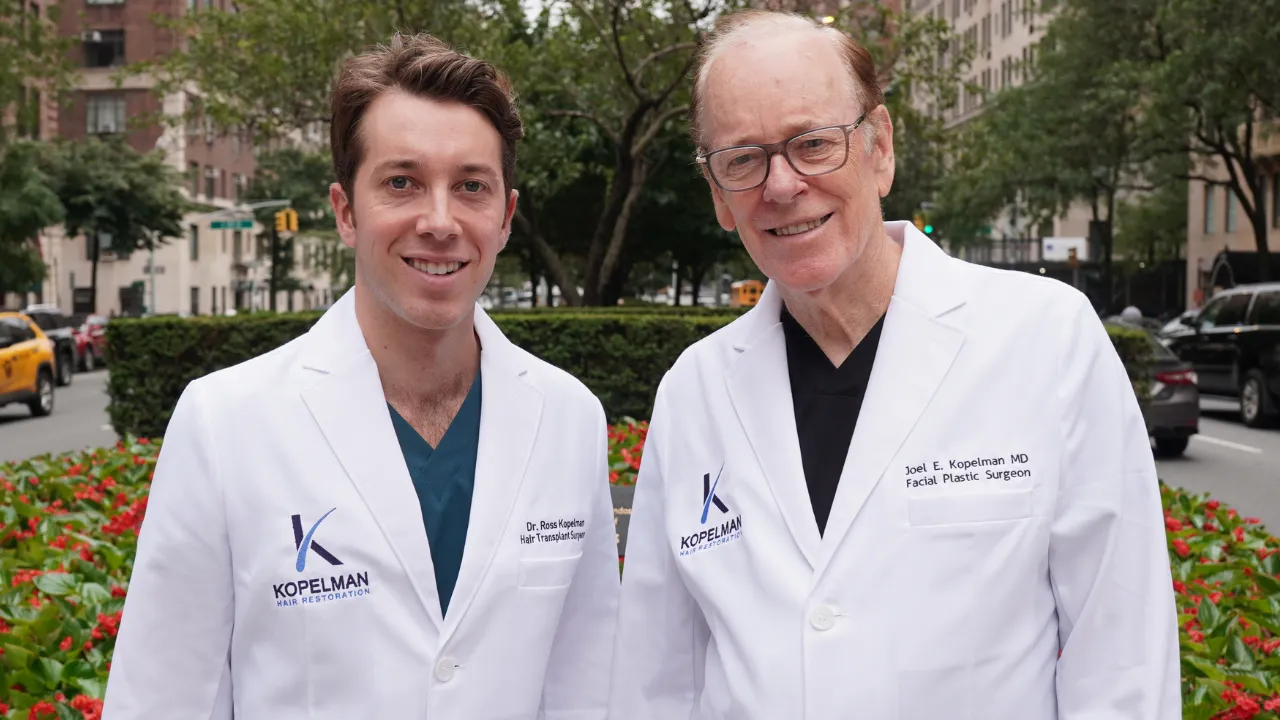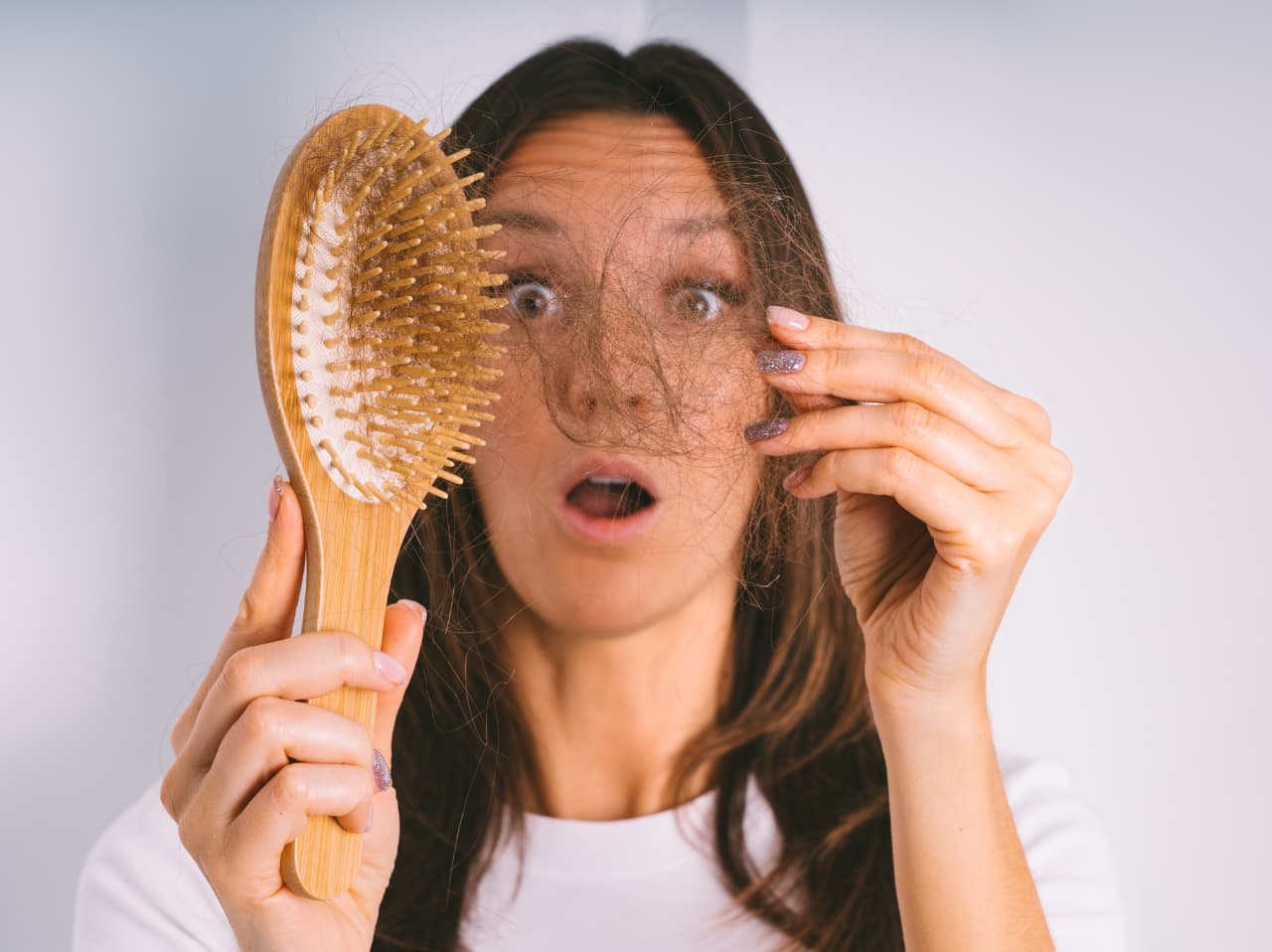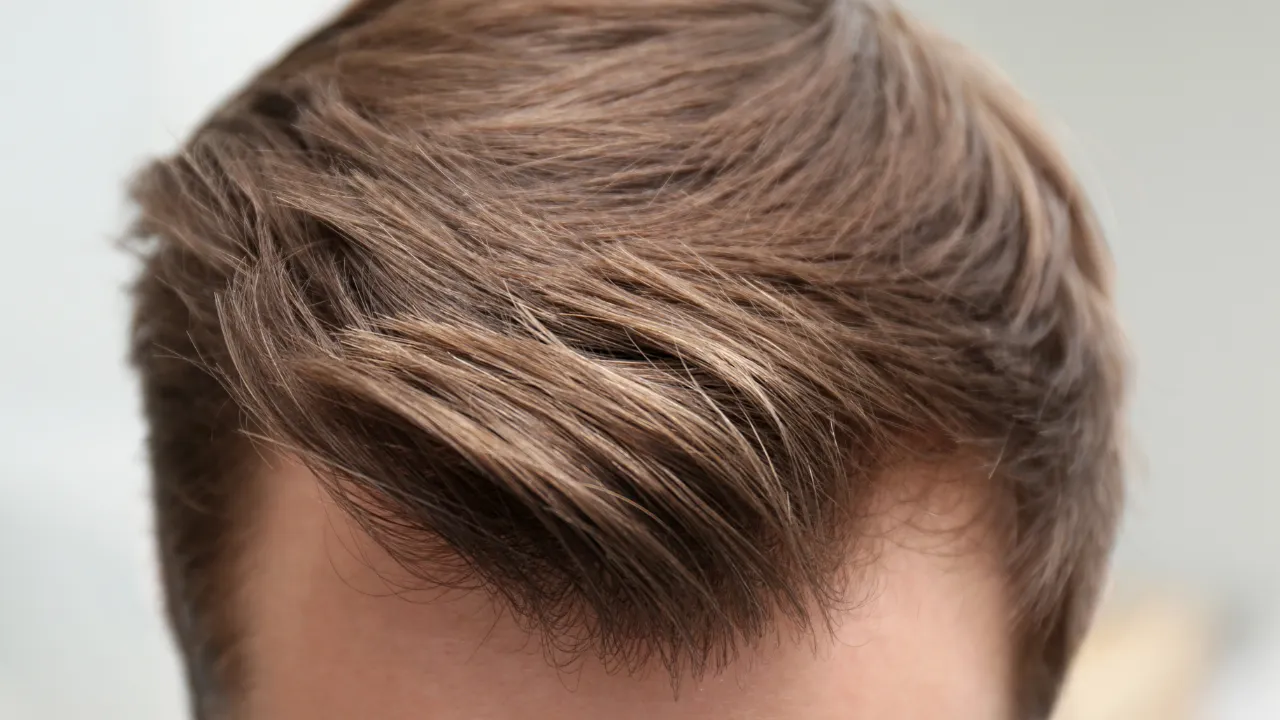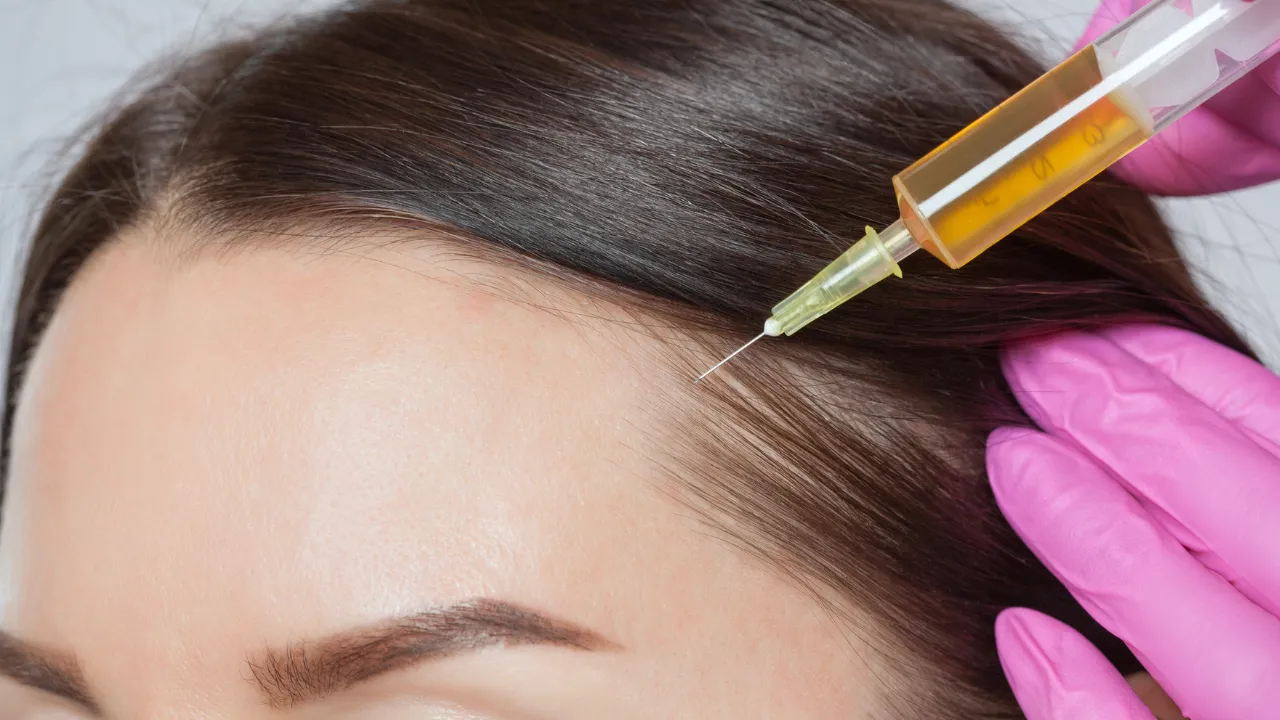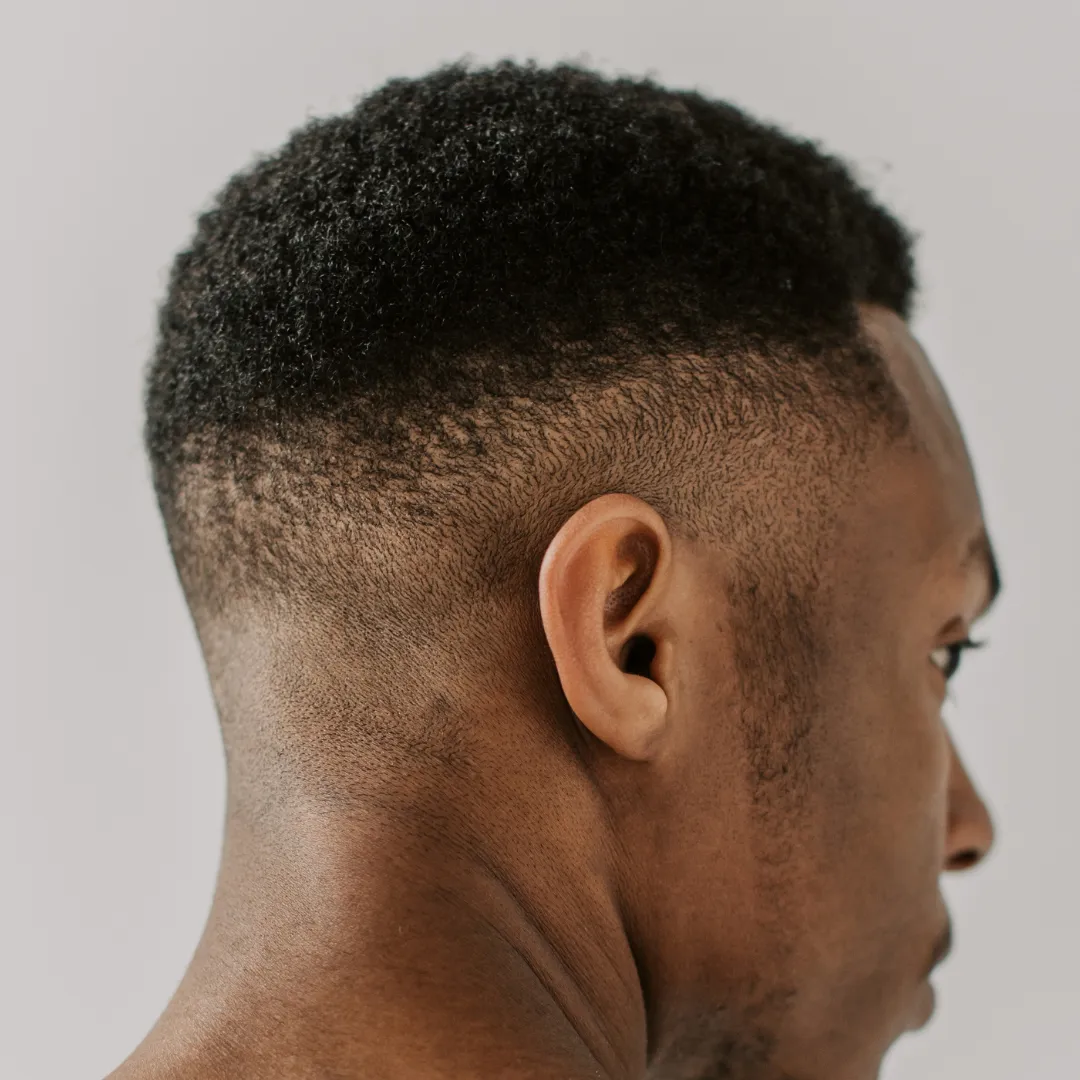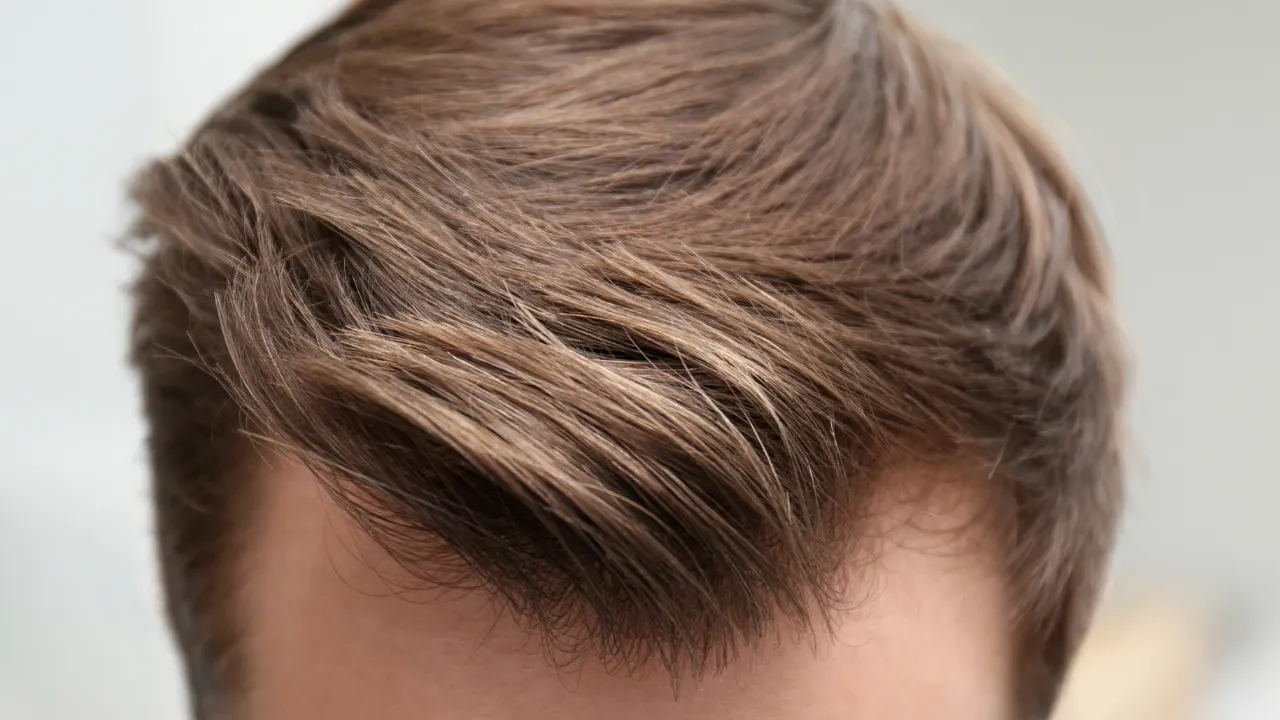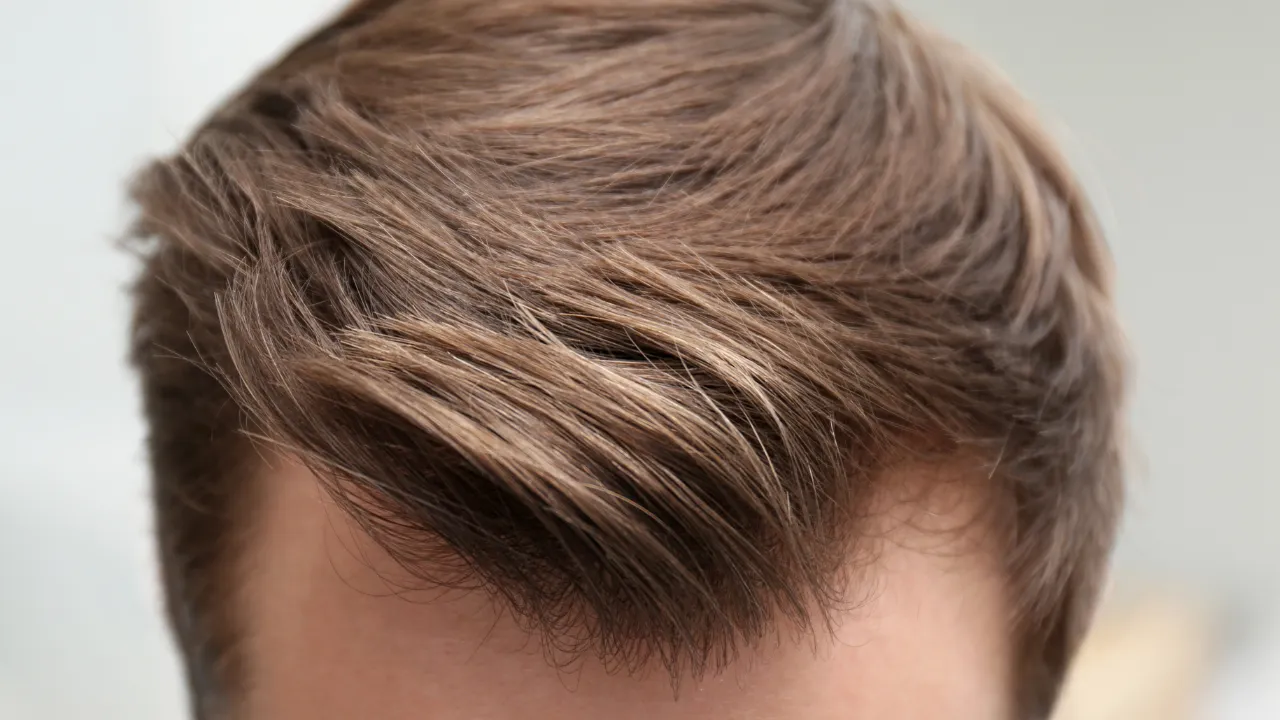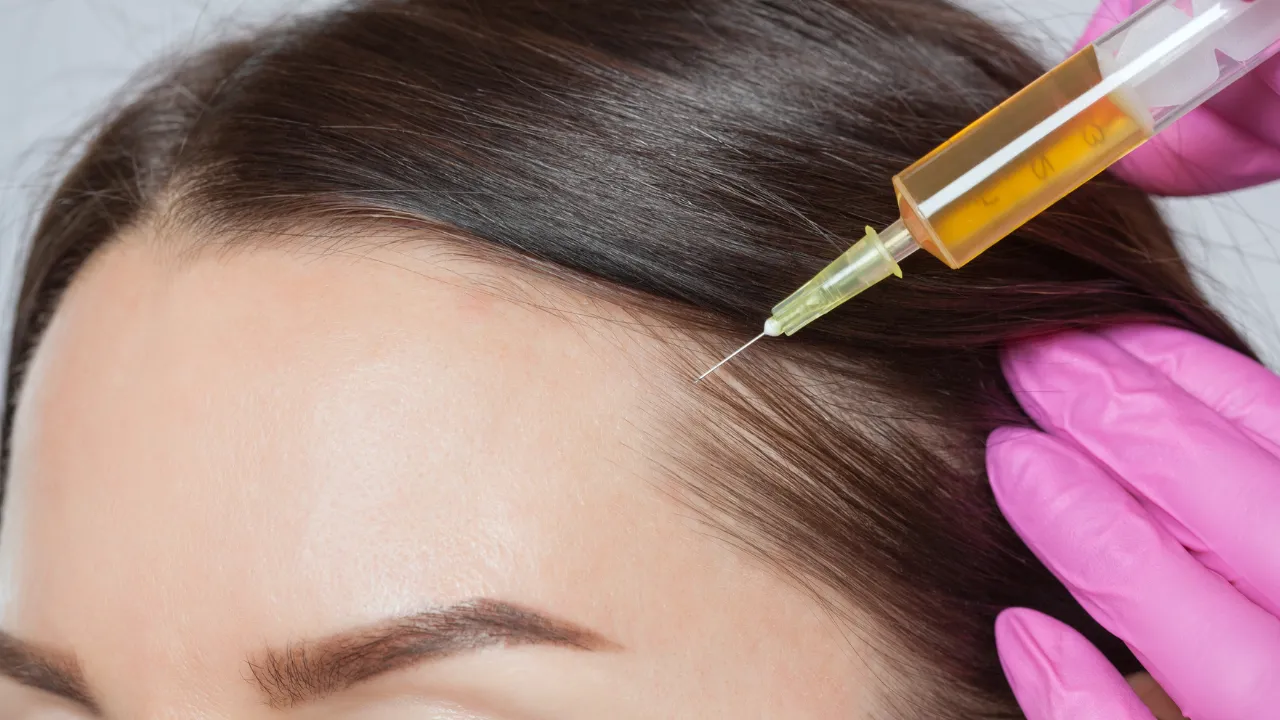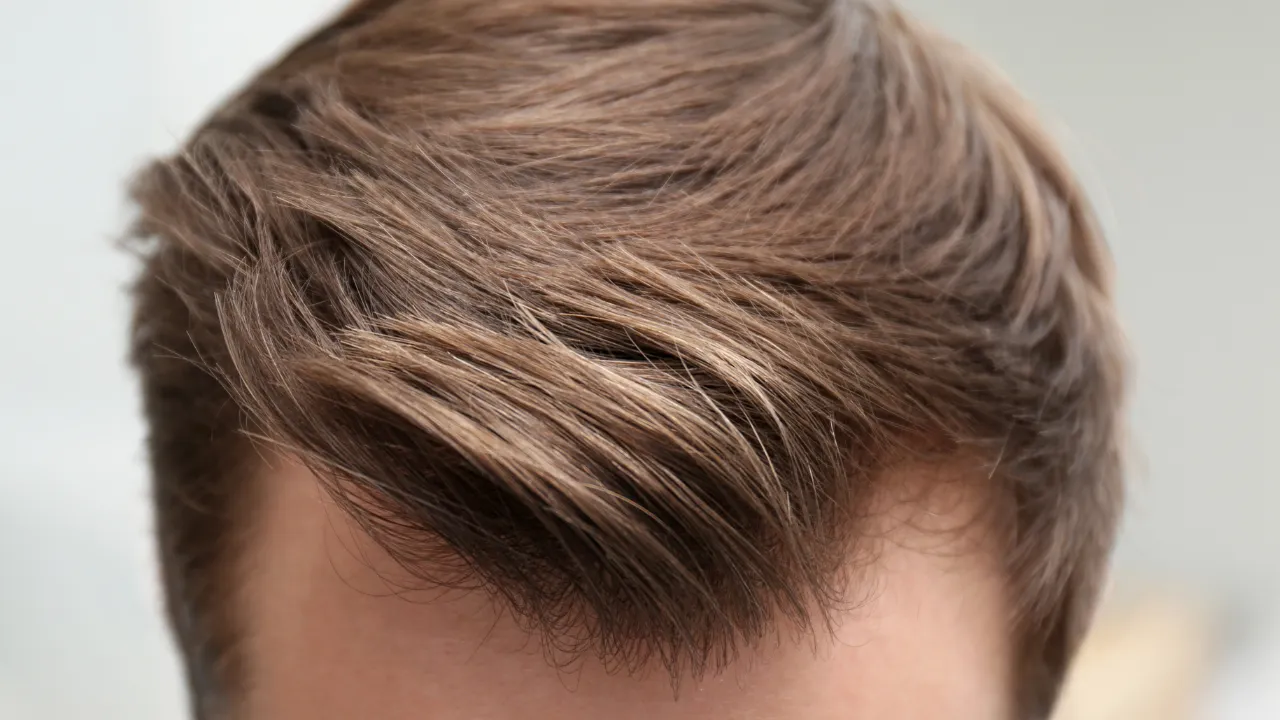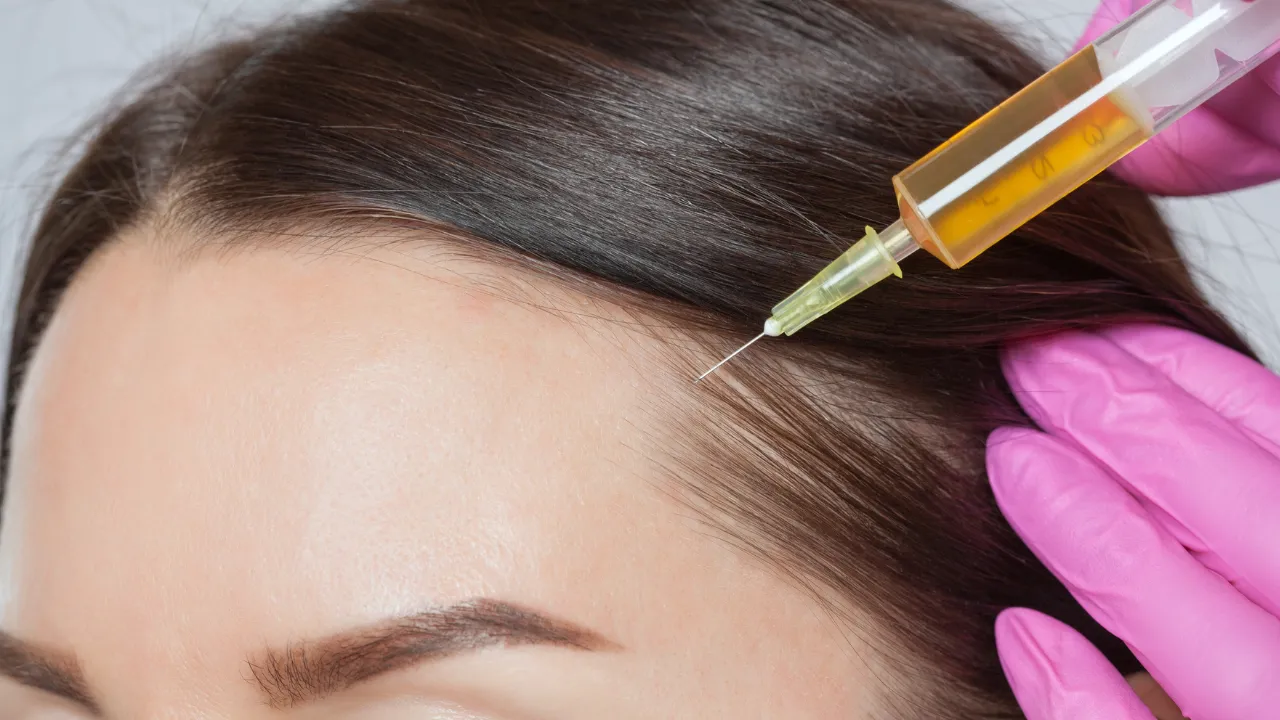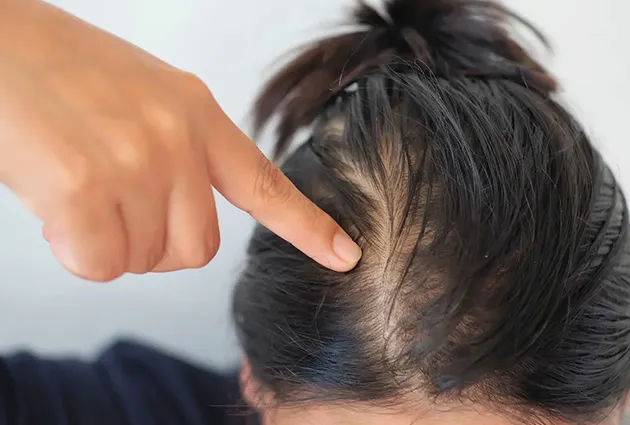Table of Contents
ToggleFinding a reliable clinic for PRP hair treatment can be overwhelming, but understanding the process makes it easier to make an informed decision. At Kopelman Hair, we help patients restore thinning hair with personalized platelet-rich plasma injections designed for real results.
What Is PRP and How It Works
PRP, or platelet-rich plasma, is a regenerative treatment that uses your own blood to encourage hair regrowth. A small blood draw is performed to collect a sample, which is then processed to isolate the platelets. These are injected into the affected area of the scalp.
How Scalp PRP Stimulates Hair Growth
The platelets contain growth factors that signal your hair follicles to repair and grow. This improves blood flow and activates blood vessels in the scalp. It also helps rejuvenate damaged tissue and supports healthier, denser hair over time. It’s especially helpful in early-stage or patterned hair loss. Some researchers believe these platelets may trigger dormant cells and interact with stem cells around the follicles.
PRP Selphyl vs Traditional PRP
PRP Selphyl uses a specialized gel matrix to preserve and activate platelets longer. Compared to traditional PRP, it may improve consistency and outcomes, depending on patient needs.
Does PRP Really Regrow Hair?
In many cases, yes. Patients often report stronger, thicker strands within weeks of their first sessions. Results vary, but consistent treatment leads to visible improvement, especially in mild to moderate hair loss.
Who Should Consider PRP Treatment
PRP is ideal for men and women experiencing thinning or patchy hair but who still have active follicles. It’s a good option if you’re not ready for surgical hair restoration.
Ideal Candidates and Hair Loss Stages
Best results occur in early to mid-stage hair loss. Candidates should be in good health and have realistic expectations. PRP doesn’t create new follicles but can improve density. Patients with alopecia areata may also respond positively depending on the severity.
PRP Before and After Hair (Female Results)
Women often see reduced shedding and better hair texture. PRP before and after hair female comparisons show improved volume and less visible scalp in thinning areas. Explore our female hair loss guide for more information about this topic.
PRP Hair Treatment Success Rate
Studies suggest over 70% of patients see noticeable results. Dr. Kopelman has seen even better success rates at his clinic by customizing treatments for each patient’s needs and designing a tailored treatment plan.
Benefits and Risks of PRP Hair Treatment
PRP offers a non-surgical way to slow hair loss and boost growth using your own biology.
Key Advantages Over Other Options
- Minimally invasive with no downtime
- Uses your own blood, reducing risk of reaction
- Complements other therapies like minoxidil or microneedling
Safety Profile and Common Side Effects
Side effects are usually mild. You may experience tenderness, redness, or slight swelling after the injection. These symptoms resolve within a day or two.
How PRP Compares to Other Hair Loss Treatments
PRP is a non-surgical alternative to common hair loss treatments. Unlike hair transplants, PRP doesn’t involve scalp incisions or recovery time. It also differs from topical options like minoxidil or oral medications like finasteride, which often require daily use and may cause side effects.
PRP uses your own blood and works naturally with your body. It’s often used alongside other treatments to improve results. Patients who don’t want surgery or systemic drugs often find PRP to be a more comfortable starting point.
How Long After PRP Can I Take Ibuprofen?
Avoid ibuprofen for at least 48 hours, as it may interfere with the body’s healing response. Stick to acetaminophen if you need pain relief.
What to Expect from the PRP Procedure
Understanding each step helps you feel more confident about treatment.
Step-by-Step Process
- A small blood is drawn from your arm.
- Platelets are separated using a centrifuge.
- The PRP is injected into areas of hair thinning.
The process takes about 30–45 minutes in total.
Sessions Needed and Timeline
Most patients begin with 3–4 sessions spaced a month apart, followed by maintenance treatments every 4–6 months. You may notice changes after the second or third session.
New Phases PRP: When You’ll See Results
You can expect visible improvement within 3 to 6 months. The new phases PRP effects include stronger roots, improved texture, and reduced shedding over time. Many patients continue maintenance to support long term results.
PRP Cost and Availability Near You
Pricing varies depending on location, the number of sessions, and the clinic’s reputation.
How Much Does PRP Hair Treatment Cost Near Me?
In most cases, a single PRP session costs between $500 and $1,500. Bundled packages may reduce the price per treatment.
Price Comparison by Clinic
Some clinics may charge more due to experience or enhanced techniques like PRP Selphyl. Always compare based on reputation, not just cost.
Clinics Open Now and Booking Options
Search for “PRP hair treatment near me open now” or “PRP hair near me” to view local options. Many clinics, including Kopelman Hair, offer online booking for fast scheduling.
Choosing a Provider Near You
Choosing the right clinic ensures better outcomes and safety.
What to Look for in a PRP Clinic
- Board-certified physicians
- Experience in hair restoration
- Transparent pricing and before-after results
Doctors Who Perform PRP Injections Near Me
Not all providers are equal. Look for doctors like Dr. Kopelman, who specialize in scalp PRP and have decades of experience in aesthetic and hair restoration treatments.
PRP Hair Treatment Near Me Reviews
Patient reviews help evaluate a clinic’s service, comfort, and results. Positive feedback often reflects consistency and skilled application.
Real PRP Hair Treatment Results at Kopelman Hair
Our patients often see meaningful changes after a few sessions. One client in her early 40s came in with diffuse thinning and visible scalp at the crown. After four PRP sessions, she reported less shedding and visibly fuller volume.
Another male patient with early-stage frontal recession saw slower hair loss progression and stronger regrowth after three sessions combined with minoxidil. These results reflect our personalized approach, guided by Dr. Kopelman’s decades of experience in scalp health.
Every patient responds differently, but most benefit from early intervention and expert-led care.
Common Questions About PRP Hair Treatment
- Can PRP stop genetic hair loss? It may slow progression but doesn’t alter genetics.
- Is there downtime? You can return to normal activity the same day.
- Can I combine PRP with other treatments? Yes, it often works well with topical or oral therapies.
PRP for hair loss is a promising option for people seeking non-surgical improvement. At Kopelman Hair, personalized care and expert guidance ensure every patient gets the most from each session. Some clinical trials are also exploring the long-term benefits of platelet rich plasma scalp treatments, helping further validate its place among modern treatment options.
Your next step
With expert guidance from Dr. Kopelman and a treatment plan tailored to your needs, you can achieve stronger, fuller hair over time. If you’re searching for trusted hair prp near me, Kopelman Hair provides the experience and care to help you move forward with confidence. Schedule a consultation now. Schedule a consultation now.


